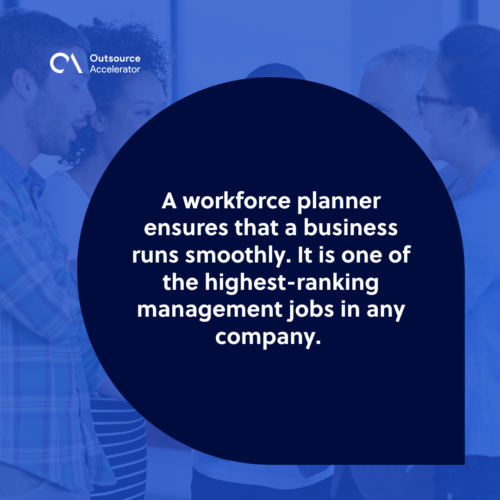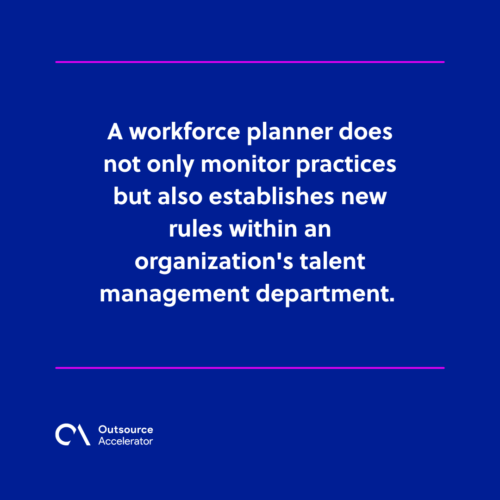Workforce planner
Definition
What is a workforce planner?
A workforce planner ensures that a business runs smoothly. It is one of the highest-ranking management jobs in any company. A workforce planner must be a seasoned professional with excellent management skills.
The entire purpose of hiring a workforce planner is to ensure that the company’s business plan and its personnel are in sync. Dashboards for work volume and staffing forecasts are created and maintained by the workforce planner.
In addition, a workforce planner gathers organizational data and utilizes it to create reports on work volume and expected employee requirements. Depending on the needs of the firm, reports are created on a daily, weekly, monthly, or annual basis.
The data is then used to enhance business operations, such as optimizing work schedules and identifying important roles.
Moreover, this position is in charge of workforce management and load balancing during work peaks and troughs. The workforce planner provides schedule modifications and recommendations to enhance service and quality.

Common duties of a workforce planner
A workforce planner does not only monitor practices but also establishes new rules within an organization’s talent management department.
The following are other tasks that a workforce planner does:
Forecasting staffing needs
Working with the HR department and the executive management team, a workforce planner is responsible for designing a staffing strategy. They make accurate estimates for hiring demands and assess the capabilities that new hires will need.
Recruiting skilled applicants
The workforce planner can prepare a detailed staffing strategy once the corporate executives review the data. This strategy will assist in matching job candidates with the best opportunities.
Employee training programs for skill development
A workforce planner must create employee training programs, which can provide employees with the information and skills they need to achieve the company’s objectives. Employee training programs teach employees how to work more effectively and efficiently.
Job fulfillment
One of management’s primary responsibilities is to guarantee that employees are productive while preserving the quality of their job. There are various approaches for management to keep personnel performing at a high level.
Developing staff training programs, increasing workplace communication, resolving disagreements fairly, and introducing reward and pay bonuses are all examples of ways to keep performance levels high.
Reassigning workers
It is critical to verify that each employee has received the necessary training. When positions open up, the workforce planner can suggest employees who can fill the vacancies. The company can then hire new personnel to expand its operations.
The workforce planner is also responsible for categorizing occupations, determining when a position becomes outdated, and offering strategic recommendations to upper management for decision making.

What are the phases of workforce planning?
Workforce planning outlines the business’ future labor requirements to fulfill goals and objectives. Here are the phases of an effective workforce planning process.
Setting of a strategic direction
Setting the strategic direction for the workforce plan entails recognizing significant mission goals and future objectives specified by corporate management. This should also include how the workforce should be aligned to achieve them.
Supply analysis
Supply analysis involves learning about the existing workforce and how it is expected to evolve as a result of turnover and other factors.
Demand analysis
Understanding the organization’s present and potential workforce requirements is crucial when conducting a demand analysis.
Analyzing gaps
This phase includes establishing the top priority gaps with the biggest effect on organizational performance. The gaps between workforce need and supply should also be analyzed.
Solution implementation
Once the workforce gaps have been identified, the appropriate actions should be planned according to the company’s goals.
Monitoring progress
It’s critical to routinely assess the success of your existing workforce planning solutions and their impact on the gaps they’re supposed to close, as well as improve solutions to maximize their efficacy.







 Independent
Independent




